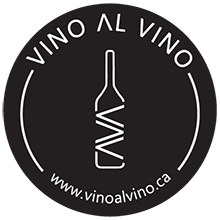Labeling Wine Bottles | Everything you need to know to drive sales

The labeling of wine bottles has taken on special importance in recent years due to three main factors:
1
Consumers’ growing need to know what’s in the bottle (ingredients)
2
Increasing environmental awareness (sustainability and carbon footprint)
3
New European Economic Area wine labeling laws
It is no longer sufficient to use the wine label to convey solely the most rudimentary product and provenance information. The wine label presents a plethora of opportunities to inform, connect and engage with consumers and extend brand awareness and reach. Developing a strategy around the wine label should be an integral part of the wine marketing strategy for wine producers.
The following data reflect the great importance of the wine label today:
- The paper "The influence of the label on wine consumption: its effects on the perceived authenticity and purchase behavior of young consumers" found that consumers seem to be affected by extrinsic cues on wine bottles, such as the shape, size and color of the bottle. Drink alcoholic beverages seems important as much as the aesthetics of the packaging.
- On the other hand, the paper "The Impact of the Content of the Label on the Buying Intention of a Wine Consumer" points out that expert wine consumers tend to make informed decisions, considering the information present on the label. According to the same paper, wine label information is generally more relevant for them than for non-expert consumers.
- Finally,
a report published by Statista indicates that, during 2019, the 4 countries where people relied most on the information on the label to make a purchase decision were Australia (40%), the United States, England and Canada (all 3 with 38%).
However, as mentioned above, label regulations and wine labeling laws such as the EU 2023/27 Agricultural Reform have increased the importance of enhancing the information contained on the alcoholic beverage. Therefore, it is necessary to talk about what information is required on wine bottles. In this way, you will be able to market your wines worldwide, and your brand will have greater visibility and brand reach.
Wine label requirements and information
So, what is required on a wine label? The requirements and information that must be present on the label may vary from country to country. In this section, we will focus on both domestic and imported wines: from Canada, USA, the European Union, Argentina, Australia.
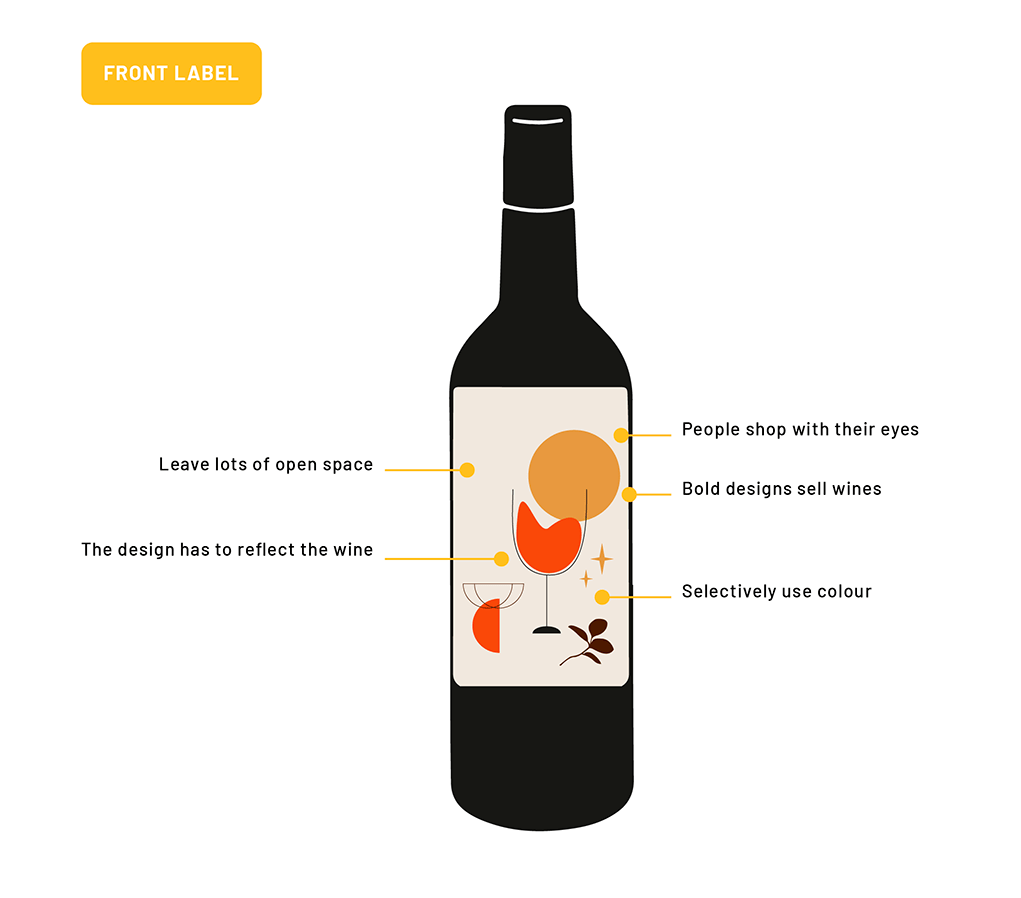
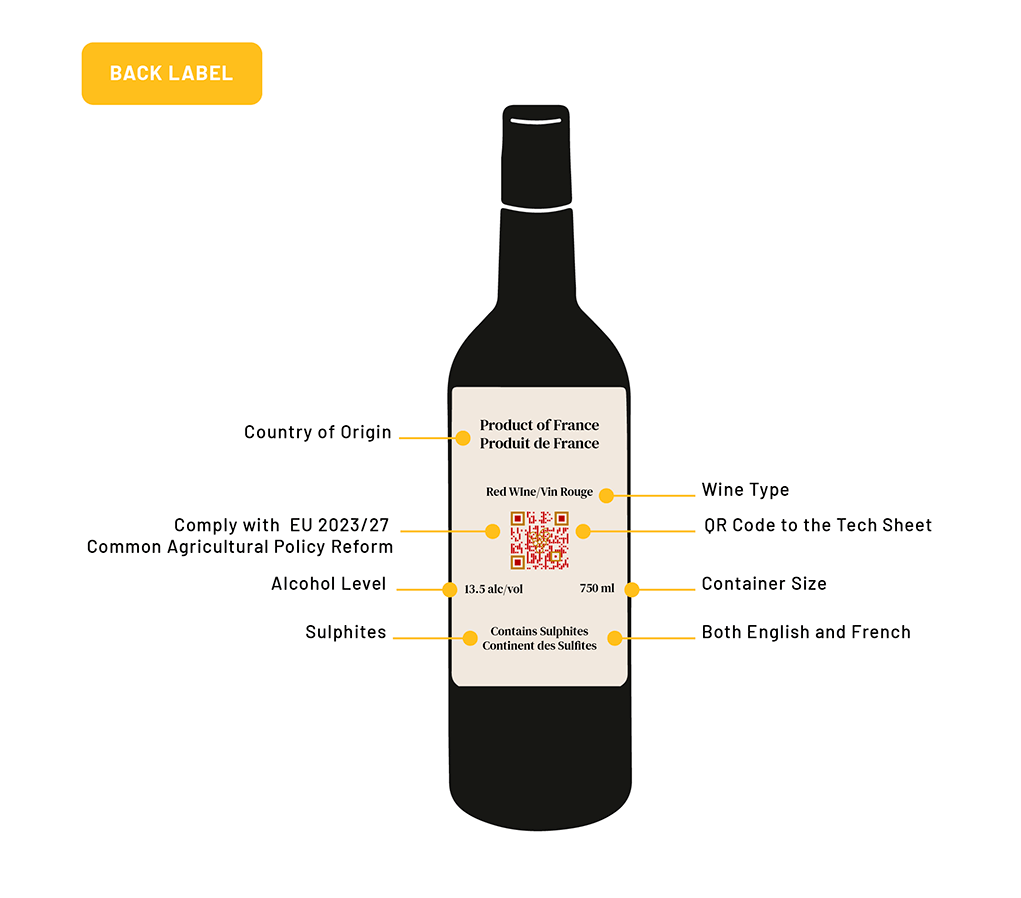
Canada
In Canada, the Canadian Food Inspection Agency regulates labeling. However, the sale and distribution of alcohol is provincially regulated. In addition, each provincial regulator (aka Liquor Board) imposes additional labeling requirements, despite the fact that labeling is federally regulated.
Currently, the Liquor Boards are trying to stand-up a taskforce to harmonize the labeling requirements across the 10 provinces in Canada.
Canada is a bilingual country with both English and French as the official languages. In order to avoid incurring the cost to relabel or apply strip labels, ensure that the label is prepared in both English and French.
First, it is necessary to say that the common denomination of the wine as well as the alcohol content and the net volume of wine must be present in the same visual field. They can be placed on the front label or on the back label, but must never be separated.
-
Vignette and Brand Name
The vignette and the brand name of the product may be included optionally, but if you choose to place them, they should not induce overconsumption of the product.
The minimum height of the characters on the label should be at least 1.6 mm to allow for ease of readability.
-
Common Name
The names of the grape varieties are not accepted as a common name, but adjectives such as red wine or vin rouge are.
The minimum height of the characters on the label should be at least 1.6 mm to allow for ease of readability.
-
Country of Origin
It is necessary to remember that, to declare a wine as Canadian, not only must it be produced in Canada, but it cannot be made from imported grapes or juices.
The minimum height of the characters on the label should be at least 1.6 mm to allow for ease of readability.
-
Net Amount
Expresses the net volume of wine in a bottle. Officially, Canada follows the metric system. The minimum size of the characters for the net amount of wine in a bottle varies according to the size of the bottle. It is necessary to remember that volumes less than 1 litre must be expressed in mL, while volumes of one litre or more must be expressed in liters (L). Even though centiliters are a metric system measure, the Liquor Boards commonly reject a wine labelled as 75 cL. The wine needs to be labelled either 750 mL or 0.75 L.
The minimum size for numeric characters on a 750 mL or 1.5 L bottle is 3.2 mm. On the other hand, the size of the mL or L characters must be at least 1.6 mm.
-
Alcohol Content
Expresses the amount of alcohol in a wine. The alcoholic strength must be expressed in a bilingual format. Regardless of what the CFIA requirements state, the Liquor Boards only accept either "XX% alc./vol." Or "Alcohol XX% by Volume/Alcool XX% par Volume".
The smallest character must have a minimum size of 1.6 mm.
-
Allergen Declaration
It is only required in the case of wines that are made with at least one potentially allergenic ingredient. The most common allergen in wines is sulfites. Technically, if a wine contains less than 10 particles per million, the label is not required to state that the wine contains sulfites. However, to avoid complications, we recommend that suppliers include “Contains sulfites - Continent des sulfites” on the back label. In addition, if the wine may contain some allergenic fining agents, such as isinglass, albumin or casein, an allergen fining agent declaration must be affixed. The allergen statement must appear in a box on the label, and the font color must be black, while the background must be white.
The minimum height of the characters must be 1.1 mm.
-
Additional Product Claims
Additional claims may be placed on the front label. These do not need to be bilingual, but you do need to make sure none of them are misleading. Any statement must not be misleading or imply irresponsible consumption of the product.
-
Name and Address of the Importer
It is mandatory to enter the data of the manufacturer or the importer of the wine if it is not Canadian. If the importer information is included, it must be preceded by the phrase "Imported by:/ Importé par:". However, if the importer is from the United States, it must be preceded by the phrase "In the USA imported by".
The characters in this section must have a minimum size of 1.6 mm, and the name of the country must be in English or French.
-
GTIN Barcode
Must appear on all units intended for consumer sale. The minimum font magnification should be 80%. On the other hand, human-readable characters should be located on the left (if the placement is vertical) or at the bottom of the code (if the placement is horizontal).
-
Lot Code
All units intended for sale must have a lot code. This can be numeric, alphabetic or alphanumeric, and must be easy to distinguish and read.The Lot Code is required in order to meet traceability requirements.
-
Ecological Declarations
The label of a product manufactured using ecological practices must have the bilingual declaration "organic/biologique", together with the name of the body that has certified the product as ecological.
-
Product Code Marking and Refund Statements
A lot code is required on all units of sale. This is due to the Safe Food for Canadians Regulations (SFCR), which came into effect in July 2020.
To comply with this regulation, wines intended for sale must have a product manufacturing date code (in the formats bag-in-a-box and TetraPak). Optionally, reimbursement statements can be included in a bilingual format, and their characters must have a minimum size of 1.6 mm.
For the comprehensive list of labeling requirements, refer to the
CFIA: Labeling Requirements for Alcoholic Beverages page. Alcoholic beverages impairs judgment and coordination, which are all skills needed to drive a car safely.
United States
The United States requires the following mandatory information on the wine label:
-
Brand Name
It can be the name of the producer, winery or vineyard, although 'brand wines' (referred to by a name due to their commercial appeal) are becoming more and more common.
-
Wine Type
Although there are official categories ('table wine', 'dessert wine' and 'sparkling wine') these terms cannot appear on the wine label. To replace them, an American Viticultural Area (AVA) title or the wine's variety declaration is used.
- American Viticultural Area (AVA) indicates the specific geographic area where the grapes come from to make a wine. The United States has just over 200 officially designated appellations, known as American Viticultural Areas. These titles are granted taking into account the climatic and geographical characteristics of the wine-producing areas covered. For a wine to be awarded an AVA title, at least 85% of the grapes must have been grown within the boundaries of that AVA. On the other hand, for AVAs at the county and state levels, this minimum requirement drops to 75%.
- Finally, declaration of the grape varieties are mandatory in the United States. Wines labeled with the name of a grape variety must be made from at least 75% of the specified variety
-
Alcohol Content
The alcohol content is only required to be explicitly indicated in wines with an ABV greater than 14%. Wines with a lower percentage can be labeled with the exact alcohol content or the phrase 'Table Wine'.
-
Name and Address
The name and address of the bottler or producer are required, and must be preceded by the words 'Bottled By', or 'Produced and Bottled By' (only if the wine was bottled in the cellar) that made it.
Optionally, the statement 'Estate-bottled' can be added. This is reserved for wines whose elaboration process (from the cultivation of the grapes to the bottling of the wine) was carried out by the same winery and within the limits of a single AVA.
-
Net Volume
The volume of the bottle must be placed in the format of fluid ounces, liters or milliliters.
-
Sulfite Declaration
It is only required for wines containing more than 10 parts per million of sulfur dioxide.
-
Ecological Declaration
Optionally, a wine can be labeled 'Organic' if it contains less than 100 parts per million of artificially added sulphites. On the other hand, wines with the phrase 'Made with organically grown grapes' may contain some sulfites.
-
Government Health Warnings
A government health warning on the label is mandatory to market a wine in the United States.
-
Vintage
Finally, and although it is not mandatory, the vintage of the wine is usually placed (at least 95% of the grapes must be from the same vintage)
EU
First, it is necessary to take into account the reforms of the
EU Common Agricultural Policy (CAP), which will come into effect on January 1, 2023. Some regulations involving wine labeling information are:
- Basic product characteristics (name, image, product category, country of provenance);
- List of ingredients and the nutritional declaration per 100ml;
- A pictogram warning against drinking during pregnancy;
- A generic message about responsible consumption.
EU legislation requires that some data must be visible on the front label:
Mandatory information
-
Common Name
It is mandatory to mention the category of the wine product, (wine, sparkling wine, new wine still in fermentation, etc.).
-
Alcohol Content
The alcoholic strength of a wine is expressed in units or half units of percentage and must be represented in the format "% vol". The title appearing on the bottle may not be higher than 0.5% vol. or lower than the title determined by analysis. The size of the characters must be at least 5 mm in height if the graduation is greater than 100 cl, 3 mm in height if it has 20 centiliters of nominal volume per 100 cl and 2 mm in height if nominal volume is less than or equal to 20 cl.
-
Indication of Origin
If the wine has an appellation of origin, the name of the country of origin must appear on the label. In the case of wines without appellation of origin, the name of the country must be placed on the label.
-
Net Volume
The label must indicate the volume of wine contained in the bottle. For each category of wine, there is a range of usual volumes. Wines must be marketed in the following volumes: 125 mL, 200 mL, 375 mL, 750 mL and 1500 mL.
-
Bottler's Name and Address
The name and address of the bottler of the wine must be included on the label, next to the words "bottler" or "bottled by...".
-
Lot Number
The lot number refers to a set of sales units of a food product produced, manufactured or packaged under virtually identical circumstances. It is composed of numerical characters and/or letters, generally preceded by the capital letter "L". It is used for traceability reasons.
-
Allergens
If the wine contains potentially allergenic ingredients, the label must indicate "contains" (in any language of the European Union) followed by the following allergens:
Sulfites
Milk and eggs and their derivatives
Etc.
Also, there are additional mentions, regulated by articles 49 and following of the new Commission Regulation No. 2019/33 of October 17, 2018:
-
Vintage and grape variety
To indicate the vintage, it is necessary that at least 85% of the grapes used to produce the wine have been harvested during the year in question. On the other hand, if two or more grape varieties are named, the wine must come from 100% of these varieties, which must be indicated in descending order of the proportion used. In addition, grape varieties of wines without a Geographical Indication (GI) can currently be mentioned, subject to specific certification (art. 50 of Regulation (EU) No. 2019/33).
-
Residual Sugar
Presence of sugar content on the label is optional for non-sparkling or carbonated sparkling wines. These are the current names:
- Dry: less than 4 g/L
- Semi-dry: less than 12 g/L
- Semi-sweet: content between 12 g/L and 45 g/L
- Sweet: content greater than 45 g/L
-
Production methods:
Wines marketed within the European Union may refer to the production methods with which they were manufactured. These can refer to the type of fermentation of the wine or it's aging. Some examples may be "aged in oak barrels" or "hand harvest". On the other hand, if the wine was matured or aged for at least 6 months in a wooden barrel, terms such as “barrel fermented”, or “barrel aged” can be used.
-
EU Organic Logo
If a producer makes a wine under the organic viticulture standards, then s/he can use the EU organic logo on a wine label.
To facilitate the labeling of your wines, you can use the
ALC Label platform. The platform not only offers you many digital tools to customize your labels, but it will also allow you to adapt them to the regulations of each country, such as the new European regulations.
Argentina
Argentina mandates certain information to be present on the wine label:
-
Brand Name of the Product
The brand name under which a wine is identified and marketed is placed here.
-
Legal Denomination of the Product
The legal denomination of the product must comply with Article 17 of Law No. 14.878.
-
Alcohol Content
The alcoholic strength of a wine should be expressed as a percentage by volume. Also, it may vary from that of the Free Circulation Analysis by half a degree. The size of the font must be at least of 3 mm
-
Net Volume
The net content of a bottle of wine must be expressed in mL, cL or L. The size of the font must be at least of 3 mm
-
Country of Origin
The country of origin of the wine should be entered here. In the case of wines produced in Argentina, one of the following phrases must be included: Produced in Argentina, Made in Argentina, Argentine Production, Argentine Industry or Product of Argentina.
-
Data of the Fractionator
The following data of the subdivider must be entered here: subdivider's registration number and commercial name or company name. In the case of bottling on behalf of third parties, the following data must be present: registration number of the bottler and data of the person for whom the bottling is carried out, preceded by the phrase 'Bottled for' or 'Packaged for'.
-
Analysis Number
It is mandatory to place the Free Circulation Analysis number granted on the label. This number has a combination of numeric characters
-
Residual Sugar Content
It is only mandatory to place the sugar content when it is 6 mg or more per liter. In addition, it must be expressed as a percentage.
-
Color Characteristics
The color characteristics of the wine expressed on the label must coincide with the Free Circulation Analysis.
-
Products Made with Non-Wine Components
Here you must indicate the base wine component and the non-wine components, which must be expressed in percentage.
-
Logo 'Vino Argentino, Bebida Nacional'
The label must include the logo 'Vino Argentino, Bebida Nacional', on wines that are produced in Argentina. This must be 12 mm x 12 mm in size, and if it is not placed on the label it can be included in other ways, for example in the form of a medal tied by a ribbon to the bottle.
-
Health Warnings
“Drink in moderation” and “Forbidden for sale to persons under 18 years of age” must be present on the label. In addition, the claim "Contains the presence of sulfites" must be placed on the label (only if it has 10 particles per million or more) and a warning about the presence of allergens such as milk derivatives or eggs.
- Information about allergens must be placed in capital letters and bold, in a color that contrasts with the background of the label. In addition, the minimum height of the characters is 2 mm, except for packages with a visible area for labeling of 100 cm² (in this case, the minimum height is 1 mm). Another aspect to take into account is that it must be located in places that are easy to see.
Except for the exceptions mentioned above, all mandatory information must have the following characteristics:
- They must be printed in easily distinguishable colors for the consumer and be indelible. Also, the font of the letters must be easy to read.
- There are 4 mandatory mentions that must be placed in the same visual field: the legal name of the product, the alcoholic strength, the net content and the name of the country
- The size of the font must be at least of 1.50 mm
- If a wine is packaged in a cardboard package, the alcoholic content can be placed separately, at the top of the package.
Also, some wine characteristics are optional:
-
Fractionator Address
Data such as the street where the fractionation company is located and the town and the province where it is located can be placed on the label. The size should not be more than 1.5 mm
-
Origin
The indication of origin (only in regional wines, and the size must not be greater than 3 mm), the Geographical Indication (GI) (it cannot exceed 3/4 of the size of the wine brand) and the Denomination of Controlled Origin can be placed on the label
-
Vintage
To place the year of production on the label, at least 85% of the grapes used must come from the same vintage.
-
Varietal Denomination
Here the phrase 'Single variety' can be placed (the wine must be made with at least 85% of grapes of the same variety) or indicate that the wine has been made with 2 or 3 grape varieties (85% of the grapes used in the wine must come from that blend)
-
Complimentary Mentions of Differential Characteristics
The terms 'Reserva' and 'Gran Reserva' may be used here.
- 'Reserva' can only be used when, at the time of making a wine, 135 kg of grapes have been used to make 100 liters of wine. In addition, red wines must be aged for a minimum of 24 months, and white wines must be aged for a minimum of 12 months.
- On the other hand, 'Gran Reserva' can only be used when, in winemaking, 140 kg of grapes are used for every 100 liters of wine. In addition, red wines must be aged for a minimum of 24 months, and white and rosé wines must be aged for a minimum of 12 months.
- Finally, it can also be mentioned if the wine has been aged in oak barrels (the grapes must have been previously treated with wood)
-
Gluten-free Wines
The wine establishments that wish to place the legends "Gluten Free" and "Without T.A.C.C.”, and the mandatory symbol to identify that the product is gluten-free, must comply with the following precautions:
- Gluten content must not exceed 10 mg/L
- The establishment must have a Technical Manager
Finally, all imported wines can have labels in another language, but for legal circulation within Argentina they must have all the mandatory information translated to Spanish, and indicate the address of the importer.
Australia
Like most countries, Australia has both mandatory and optional labeling requirements.
Mandatory requirements
-
Wine Name
The Food Standards Code requires that labels include a name or an appropriate description of the food. There are no prescribed names, but the food must convey the true nature of the product.
- Wine products are considered foods that contain not less than 700 mL/L (70%) of wine. However, the term "wine product" may not be sufficient to convey the true nature of the product. For this reason, Australia advises that wine products to which water, coloring, flavoring, etc., have been added, be labeled as "wine-based beverage". On the other hand, exported wine products are not allowed to indicate a Geographical Indication (GI) (other than "Australia") on their labels.
-
Lot Number
Identification of a product lot is mandatory under the Food Standards Code. This identification is very useful for traceability in case of product withdrawal. In addition, if the product is not marked as part of a lot, the health authorities can withdraw from the market all the product that bears the same label. In Australia, there is no default format, but an alphanumeric code is often used. Lot identification should be posted in a visible place after bottling is complete.
-
Mandatory Warning Statements for Allergens
As in Europe, in Australia it is mandatory to inform about the possible presence of potential allergens, such as egg or milk derivatives. According to the Food Standards Code, allergen information must be declared using the required name of the food in plain English.
-
Geographical Indications Registered in the Addresses
The address of the winery may contain a registered Geographical Indication (GI) without the fruit coming from that Geographical Indication (GI), but the manner in which the address is displayed must not mislead as to the actual origin of the grapes.
-
Pregnancy Warning
The Food Standards Code requires that packaged alcoholic beverages containing more than 1.15% alcohol by volume display a pregnancy warning mark on the label. The requirements for the pregnancy warning mark on an individual unit are:
- All the alcohol bottles with less than 200 mL of capacity must have a pictogram warning, in black and red, at least with a size of 8 mm.
- All the alcohol bottles with a capacity between 200mL and 800mL must have a pictogram, in black and red, the words ‘Pregnancy Warning’, capitalized and with a red and bold Sans Serif font, and also the statement ‘Alcohol can cause lifelong harm to your baby’ in black Sans Serif font and with a space of 3 mm surrounding the border. All the components must appear without a black border, on a white background. The pictogram must have a size of at least 6 mm diameter, every character of the signal words must have a size of at least 2.1 mm, and every character of the statement must have a size of at least 1.6 mm.
- All the alcohol bottles with a capacity of over 800mL have the same requirements that the bottles with a capacity between 200mL and 800mL, but with different size of font. The pictogram must have a size of at least 9 mm diameter, every character of the signal words must have a size of at least 2.8mm, and every character of the statement must have a size of at least 2.1mm.
-
Country of Origin Statement
Despite wines being exempt from the declaration of country of origin, Section 24 of the Country of Origin Food Labeling Information requires that if a wine is made from grapes grown in more than one country, the proportion of grapes used from each country must be made clear.
- In addition, if a wine is packaged from multiple origins, a statement such as "Wine bottled in Australia from X percent Australian produce and Y percent produced from [country B]" should be added to the label.
- For wines intended for export, it is advisable to separate the country of origin labeling from any Geographical Indication (GI) claims. Some phrases that should be avoided are "Wine from Western Australia" or "Wine from Margaret River, Australia".
- In addition, it should be noted that, for export to many countries, the format of the "country" declaration is prescribed.
- Currently, many producers choose to use the EU format, which requires the word "wine" combined with the country declaration (e.g. "Wine of Australia").
-
Net Volume
Wine in standard size containers (50 mL, 100 mL, 187 mL, 200 mL, 250 mL, 375 mL, 500 mL, 750 mL, 1 liter, 1.5 liters, 2 liters, 3 liters, or a larger quantity of whole liters), is exempt from the general requirement that measurement markings appear on the primary display panel. For that reason, Australian wines may indicate volume on any label.
- However, exporters should be aware of the "single field of view" concept, which applies in member countries of the World Wine Trade Group and in the European Union and the United Kingdom.
- The indication of quantity should be located near the product name or brand name. In addition, it must have a minimum distance of 2 mm from the edges of the container, as well as from any graphics or written copy.
- Furthermore, the quantity must be expressed in metric units and in plain English.
- Also, it must be clearly visible to the consumer, and stamped or printed in a color that contrasts with the background.
- Finally, the print height varies according to the size of the bottle:
_ In the case of bottles with a height of less than 120 mm, the minimum print height is of 2.0 mm
_ In the case of bottles with a height from 120 mm to 230 mm, the minimum print height is of 2.5 mm
_ In the case of bottles with a height from 230 mm to 360 mm, the minimum print height is of 3.3 mm
_ In the case of bottles with a height of more than 360 mm, the minimum print height is of 4.8 mm
Optional requirements
-
Date Marking
The best-before date for wine and wine products is not always mandatory. It only needs to be applied when a non-glass bottle is used. However, if qualities such as "young consumption" or "freshness" are highlighted in the description, then the presence of the best-before date becomes mandatory, unless the qualities are valid for at least 2 years.
- If you decide to place the best-before date, it should be in the following format "best before [month] ]year".] In addition, the label should include a statement of the specific storage conditions necessary to ensure that the food will keep for the specified period.
-
Nutrition and Health Claims
The Food Standards Code prohibits health and nutrition claims with respect to a product containing more than 1.15% alcohol by volume, except for energy, carbohydrate or gluten content claims.
- Nutrition content claims refer to the presence or absence of certain nutrients or substances in a food, such as biologically active substances, proteins, sodium and vitamins.
- If an energy or carbohydrate content claim is made, a Nutrition Information Panel (NIP) must be included on the label. Gluten-free claims do not require a NIP.
- Finally, comparative claims such as "lighter in energy" must also indicate the comparison product. In addition, the difference between the amount of the claimed food property and that of the reference food must be at least 25% less.
How To Label Wine Bottles: 4 Steps To Do It Successfully
There are several ways to correctly label a bottle of wine. In this section we will focus on two of them: manual labeling (perfect for small or family wineries) and labeling using a semi-automatic labeling machine (ideal for medium-sized wineries). These are useful for both imported and domestic wines.
List of Services
-
1Item Link List Item 1
Place the bottle on a firm surface, such as your lap. This will prevent it from rolling. On the other hand, if you have a semi-automatic labeler, just place the bottle on the conveyor belt.
-
2Item Link List Item 2
Make sure the label is centered on the bottle. To do this, you may find it helpful to use the seam of the bottle as a guide.
-
3Item Link List Item 3
Place the center of the label on the bottle first. To do this, press firmly with your fingertips (not your nails) and then smooth it evenly from the center outwards. If you have a semi-automatic labeler, you only need to press a button or pedal (depending on the model) so that the bottle is held, and the labeler can apply the label.
-
4Item Link List Item 4
Once labeled, leave the bottle at room temperature for 24 hours. This will allow the adhesive to set properly.
However, there are several tools that can help you speed up the process or even increase the productivity of your brand. Below we will talk about some of them.
4 Tools to Help You With the Wine Labeling Process
1. Foldable Wine Choke
A foldable wine choke is perfect for small businesses, as it is an inexpensive tool and brings incredible benefits. The main one is that there is less risk of the bottle falling on the floor, compared to placing the bottle on your lap. This is because it has a felt backing that keeps the bottle from slipping. There are even some that have guides for the top and bottom of the bottle.
2. Wooden Jig
A great way to increase the productivity and size of your brand is to acquire (or build) a wooden jig. This tool is very useful because it not only allows you to properly secure the bottle, but also because it offers the possibility of placing multiple bottles for labeling. Wooden jigs are often used in wine clubs to label a larger number of bottles in an economical way.
3. Manual Labeling Machine
The manual bottling machine is the recommended previous step for a larger capacity automatic bottling machine. The main difference with the previous tools is that they hold the bottle better, preventing it from falling. Some bottlers even allow you to regulate the force with which the bottle of wine is held.
4. Semi-automatic labeller
As we mentioned earlier, semi-automatic labelers allow for much faster production, as well as a significant increase in productivity. This is because they require less human intervention (it is only necessary for an operator to place the bottle on the conveyor belt and then press a button for labeling) and the rest of the process is automatic.
Despite being more expensive than the previous tools, semi-automatic labelers are the best option for small companies that want to grow to a medium level of productivity.
5 Tips to Make Your Wine Labels Stand-out
Now, you are probably wondering how to make your wine labels stand out from the rest. This is actually not as complicated as it seems, but it requires a key factor: creativity that is transformed into a design. Consumers shop with their eyes.
Here are some tips for you to design the most attractive labels for your wine bottles:
1. Be creative with the shape of the label
One of the most interesting aspects when designing a label is to give it a shape that is not only distinctive, but also attractive to the eyes of your consumer. For example, Pure Drop Wines gave its label the shape of a drop, which allows it not only to stand out but also to represent the brand name on the label.
2. Colors are important
The color of the label is usually associated with the type of wine, and that is something you should take into account when designing your labels. For example, for a red wine, it may not be best to use a very bright label. An appropriate choice might be a label with a red background and some catchy details. Bold colours help you stand out, and they sell wine.
3. Offer a sensory experience
Although the shape and color of the bottle are very relevant aspects in the design of a label, there is another one that is increasingly being explored by wine brands. This is the texture of the label. A label that, for example, has a relief in the area of the wine's name, can end up making consumers choose your wine over another.
Another great option is to use different materials to manufacture your labels. A good option could be to use recycled paper for the label of an organic wine or stone paper like the one used by Suriol, an organic producer in Spain.
4. Typography
This is an aspect you cannot leave out of your label design. If you use a typography that is too linear and not very eye-catching, it will be more difficult for wine consumers to see your label, especially considering the great amount of wine choice that exists. Therefore, a good option could be to highlight a particular letter, with a big and bold font.
5. Compelling Visuals
A picture is worth a thousand words, especially on wine bottles. Along with colors and typography, it's one of the aspects people look for when choosing a new wine. And indeed, there are endless possibilities to choose from.
For example, if you are looking for something more traditional, for a special edition of your wine, you could go for a vintage design (it could be an image of your winery in its first years of operation). However, if you prefer a more striking design, then you can choose a more colorful abstract design.
Final Thoughts
The wine market is evolving in leaps and bounds. Wine consumers are becoming more and more aware and are demanding transparency from the products and the producers they choose to support. It is no longer enough to just put the basic wine and provenance information on the label. It is also necessary, but also a missed opportunity, not to include other pertinent information about your wine, such as the viticultural and vinicultural methods you follow.
At the same time, there are more and more possibilities for label design. As mentioned above, one of the key aspects to remain competitive in the market is creativity. The other is to stay up to date on new trends in label design.
Would like to access further thought leadership on labelling wine, check out
ALC Label
Vino Al Vino is a Canadian wine wholesaler and wine importer specializing in real wines, wines with minimal intervention. All of our wines are sustainable. Almost all of our wines are certified organic. Many of our wines are certified biodynamic. Many of our wines are full-throttle zero-zero natural wines.
News, Views and Happenings from Vino al Vino
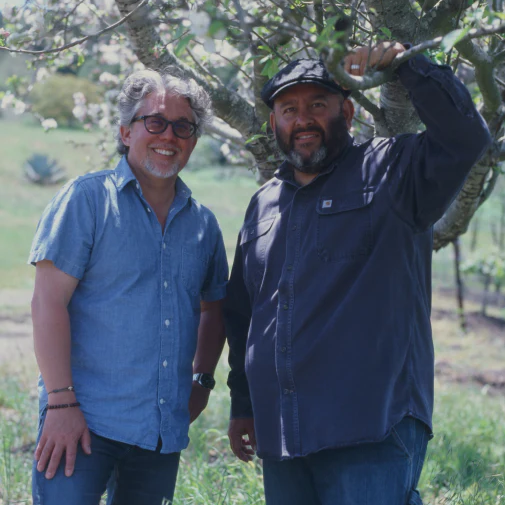
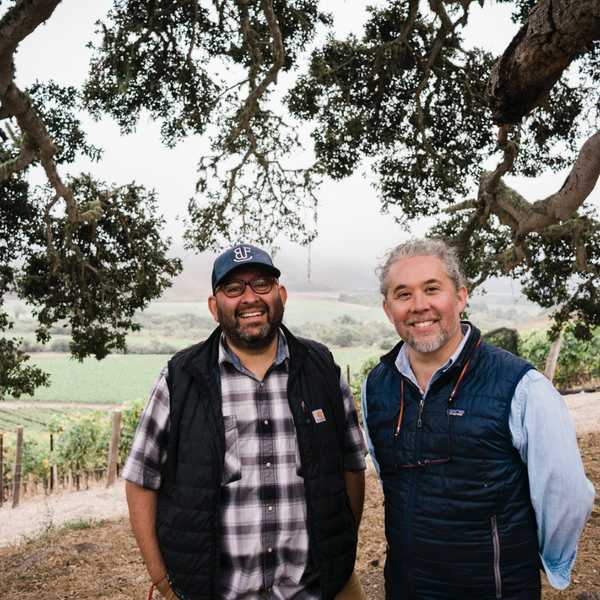
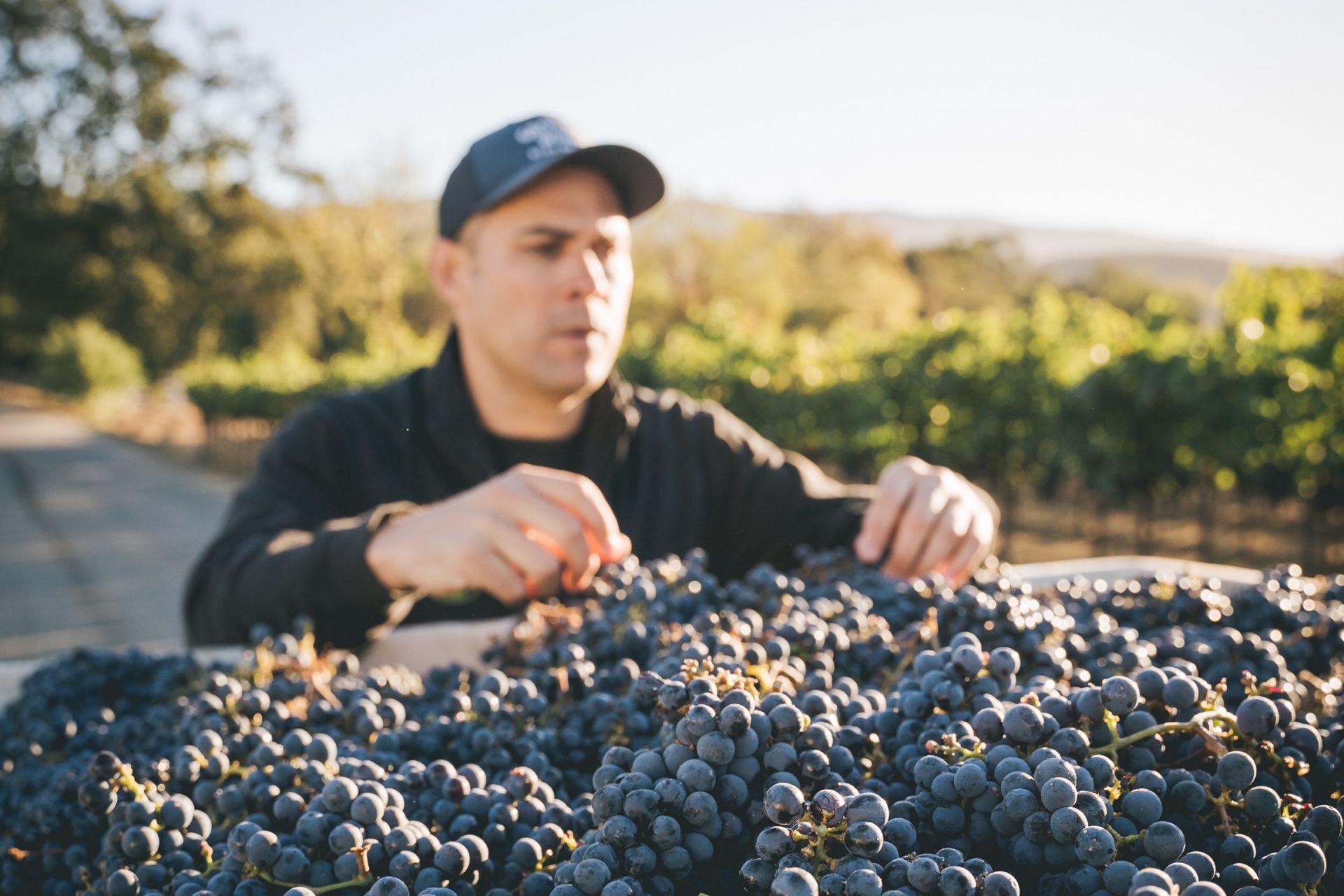
Calgary + Alberta South
Andrew Stewart
403-604-0408
andrew@vinoalvino.ca
Edmonton + Alberta North
Joe Gurba
780-203-5284
joe@vinoalvino.ca
Saskatoon + Saskatchewan
Kerrie Gavin
306-290-0277
kerrie@vinoalvino.ca
Join Our Newsletter*
Contact Us
We will get back to you as soon as possible.
Please try again later.
*By submitting this form, you are consenting to receive marketing emails from: Vino Al Vino Inc. https://www.vinoalvino.ca. You can revoke your consent to receive emails at any time by unsubscribing.
Contact Us
We will get back to you as soon as possible.
Please try again later.
*You are consenting to receive marketing emails from us. You can revoke your consent at any time by unsubscribing.
2014 - 2023 © All Rights Reserved Vino Al Vino Inc.
